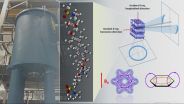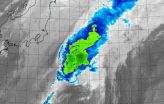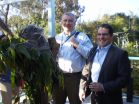(Press-News.org) MADISON, Wis. -- Here is an idea worth following: "share" for tenure; "like" to get cited.
Academic researchers are turning to social media more and more, according to Dominique Brossard, and not just to post family photos or crack wise via hashtag.
"I've been in science communication for a while now, and I am really seeing a change -- especially among the younger scientists -- in their willingness to share their work," says Brossard, a University of Wisconsin-Madison professor of life sciences communication.
It's the venue for that sharing that has inspired work by Brossard, fellow UW-Madison professors Dietram Scheufele and Michael Xenos, and their colleagues.
This fall, the group published a study in the journal Journalism & Mass Communications Quarterly showing a connection between "h-index" -- a measure of the quality of a researcher's work and influence -- and whether the scientists interact with reporters and get mentioned on Twitter. Doctoral student Xuan Liang served as first author on the paper.
Attention from reporters is good news for h-index, but couple that with attention on Twitter, Brossard says, and you see a more pronounced spike in reputation.
"If you talk to reporters and you tweet about your research, your work is more likely to be cited than people who do one or the other," she says.
As many as 30 percent of the members of the faculty at UW-Madison are using social media at least three times per week to find news and insights about science, according to a survey that supplied evidential heft to a piece penned by collaborator Sara Yeo, an assistant professor of communication at the University of Utah and a recent graduate of the UW-Madison Life Sciences Communication Ph.D. program, for the October issue of The Scientist.
That sort of activity hasn't always been encouraged. Research can be time-intensive work, and any distraction from scholarship can draw criticism as a waste of a precious resource. Brossard hopes a new understanding of the relationship between research and communicating with the public can change that.
"What this shows us is that sharing your science with the public is not hurting the science by stealing time," she says. "If the goal is to encourage people, ultimately to be productive scientists, and if directors of labs are discouraging people from engaging in this activity, they're actually hurting the science itself. Because people who do this are cited more often in scientific journals, they're making science accessible to broader audiences at the same time."
Social media use is rising in other professional circles as well, according to Xenos.
"As in other areas, such as politics for example, social media was once met with skepticism but is increasingly part of the culture," he says. "Just like it became the norm there, our research shows it may one day become the norm in science."
Flip the connection between social media attention and h-index on its head, and it's still worth taking to heart.
"The counter argument is that it may be just the other way around -- that it may just be the big names that get mentions," Scheufele says. "But then, the lesson should be that the most successful people in your field are also the ones that are good at getting outside the ivory tower. That should be something to emulate."
At UW-Madison, Brossard sees the sort of institutional encouragement she has advocated in talks to academic groups and at the National Academy of Sciences' Sackler Colloquia (organized by Scheufele, among others) each of the last two years.
"You don't have to look any farther than the UW-Madison website," Brossard says. "You see an 'in the news' section with media coverage of research, and you see a section for Twitter and Facebook and Instagram."
It's not just the institutional website that is changing.
"Everything is changing. The scientific publishing industry is changing," Brossard says. "Very traditional publications are embracing social media, and evidence is piling up that this method of communicating should soon seem traditional to scientists."
INFORMATION:
Chris Barncard
608-890-0465
barncard@wisc.edu
Greater use of social media gets science, scientists noticed, study says
2014-11-06
ELSE PRESS RELEASES FROM THIS DATE:
ORNL thermomagnetic processing method provides path to new materials
2014-11-06
OAK RIDGE, Tenn., Nov. 6, 2014 - For much the same reason LCD televisions offer eye-popping performance, a thermomagnetic processing method developed at the Department of Energy's Oak Ridge National Laboratory can advance the performance of polymers.
Polymers are used in cars, planes and hundreds of consumer products, and scientists have long been challenged to create polymers that are immune to shape-altering thermal expansion. One way to achieve this goal is to develop highly directional crystalline structures that mimic those of transparent liquid crystal diode, or ...
The tiger beetle: Too fast to see
2014-11-06
PITTSBURGH--Speed is an asset for a predator. Except when that predator runs so fast that it essentially blinds itself.
The tiger beetle, relative to its size, is the fastest creature on Earth. Some of these half-inch-long beetles cover about 120 body lengths per second (at about five miles per hour). The fastest human can do about five body lengths. To take the sprinting gold from the tiger beetle, a person would have to hit 480 miles per hour.
BUT! The tiger beetle has a problem. At peak speeds, everything becomes a blur. They can't gather enough light with their ...
Black, Hispanic kids underrepresented in autism identification
2014-11-06
LAWRENCE -- The number of children diagnosed with autism has increased in recent years, but a new study co-authored by a University of Kansas professor shows that while the number of students with autism increased in every state from 2000 to 2007, black and Hispanic children were significantly underrepresented.
Jason Travers, assistant professor of special education, co-authored a study that analyzed administrative identification of autism in every state under the Individuals with Disabilities Education Act for the years 2000 and 2007. The disparity in the odds of white ...
Who will come to your bird feeder in 2075?
2014-11-06
The distribution of birds in the United States today will probably look very different in 60 years as a result of climate, land use and land cover changes.
A new U.S. Geological Survey study predicts where 50 bird species will breed, feed and live in the conterminous U.S. by 2075. While some types of birds, like the Baird's sparrow, will likely lose a significant amount of their current U.S. range, other ranges could nearly double. Human activity will drive many of these shifts. The study was published today in the journal PLOS ONE.
"Habitat loss is a strong predictor ...
NASA sees Tropical Storm Nuri resemble a frontal system
2014-11-06
NASA's Terra satellite passed over Tropical Storm Nuri on Nov. at captured an infrared picture of the storm. The storm looked more like a frontal system as it stretched from northeast to southwest.
The Moderate Resolution Imaging Spectroradiometer or MODIS instrument that flies aboard NASA's Terra satellite flew over Nuri on Nov. 6 at 1240 UTC (7:40 a.m. EST). The MODIS image showed some strong thunderstorms remaining in a small area around Nuri's center, but the storm appeared stretched out from northeast to southwest. Wind shear was affecting the storm, stretching it ...
'Rewriting' the way to make natural drug compounds
2014-11-06
(SALT LAKE CITY)--One of the big hurdles in bringing drugs to market is the difficulty of producing large enough quantities of potential compounds to conduct clinical trials. This is particularly true with compounds made by organisms, which usually are produced in exceedingly small amounts and are difficult to synthesize in the laboratory.
Researchers from the University of Utah College of Pharmacy have made an important stride in addressing those problems. In a study in ACS Synthetic Biology, researchers led by Eric W. Schmidt, Ph.D., professor of medicinal chemistry, ...
NASA see birth of Tropical Cyclone 5B in Bay of Bengal
2014-11-06
The fifth tropical cyclone of the Northern Indian Ocean season formed in the Bay of Bengal as NASA's Terra satellite passed overhead and captured an image of the storm.
When Terra passed over Tropical Cyclone 5B on Nov. 6 at 05:05 UTC (12:05 a.m. EST), the MODIS instrument aboard took a visible image of the storm. The MODIS image showed a concentrated storm with strong thunderstorms circling tight around the center and in the northeastern quadrant.
By 1500 UTC (10 a.m. EST), Tropical Cyclone 5B was located near 13.4 north latitude and 87.9 east longitude. That's about ...
Study highlights prevalence of mistreatment between nursing home residents
2014-11-06
NEW YORK (November 6, 2014) -- Inappropriate, disruptive, or hostile behavior between nursing home residents is a sizable and growing problem, according to new research from Weill Cornell Medical College and Cornell University.
The study found that nearly one in five nursing home residents were involved in at least one negative and aggressive encounter with one or more fellow residents over the previous four weeks. These included acts of verbal or physical abuse, inappropriate sexual behavior, or invasion of privacy, among other incidents, known collectively as resident-to-resident ...
Denying problems when we don't like the political solutions
2014-11-06
DURHAM, N.C. -- There may be a scientific answer for why conservatives and liberals disagree so vehemently over the existence of issues like climate change and specific types of crime.
A new study from Duke University finds that people will evaluate scientific evidence based on whether they view its policy implications as politically desirable. If they don't, then they tend to deny the problem even exists.
"Logically, the proposed solution to a problem, such as an increase in government regulation or an extension of the free market, should not influence one's belief ...
Koala study reveals clues about origins of the human genome
2014-11-06
Eight percent of your genome derives from retroviruses that inserted themselves into human sex cells millions of years ago. Right now the koala retrovirus (KoRV) is invading koala genomes, a process that can help us understand our own viral lineage and make decisions about managing this vulnerable species.
In a recent study scientists from the University of Illinois discovered that 39 different KoRVs in a koala's genome were all endogenous, which means passed down to the koala from one parent or the other; one of the KoRVs was found in both parents.
Koalas are the ...



